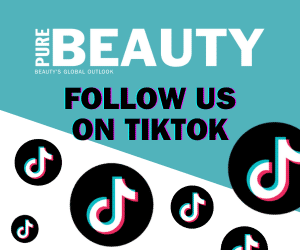Perfume and cosmetics are among the most counterfeited consumer goods in the UK.
A new report by investigations firm Kroll revealed beauty as the sixth most popular category on the fake goods market.
Toys were determined to be the most forged, followed by clothing and mobile phone parts.
The news comes as British police call for beauty influencers to stop using fake products in their YouTube tutorials.
The City of London Police’s Intellectual Property Crime Unit (PIPCU) said knock-off make-up can cause burns, allergic reactions and swelling.
According to the organisation, laboratory tests have shown bogus cosmetics have been found to contain toxic levels of chemicals and harmful substances such as arsenic, mercury and lead.

YouTubers have shared details about their allergic reactions (via YouTube/Natalies Outlet)
It also warned that counterfeit make-up is often produced in unsanitised and unhygienic factories and there have been cases where rats’ droppings and poison have also been found in the phoney cosmetics.
Detective Inspector Nick Court of the PIPCU at City of London Police said: “We’re concerned that popular YouTube stars are using counterfeit make-up in their tutorial videos.
“This not only puts them at risk of infections, rashes and burns, it could also encourage their followers to use the same harmful products.
“It’s great that YouTubers are calling out counterfeit make-up for not giving shoppers the same quality as the genuine brands.
“We are however keen to make sure they don’t expose themselves to health risks in the process.”
Since the PIPCU’s inception in 2013, officers have overseen the disruption of over 70,000 phony websites.
More on fake cosmetics:
- Jeffree Star reveals $2.5 million worth of his cosmetics line stolen
- Social media now contributes to 50% of counterfeit cosmetics sales
- EU piracy watch-list poised to name and shame fake cosmetics hubs
- Forged beauty products spike 40% in the lead up to US Mother's Day
The police have advised consumers that warning signs of an illicit website include poor spelling, grammar, images and inconsistent fonts.
Earlier this year, the Local Government Association said that hundreds of thousands of pounds worth of fraudulent beauty products had been uncovered by councils.
Some of the brands found included Chanel, MAC and Benefit Cosmetics.
Meanwhile, according to a report by Gartner L2 released last year, Amazon is particularly susceptible to fake cosmetics.
Top brands such as Olay, e.l.f. and L'Oréal were said to have a review mentioning inauthenticity on roughly 75% of their products.
Benedict Hamilton, Managing Director at Kroll, added: “Counterfeits don’t begin and end with the seller on the street; there is an entire supply chain in operation to create bogus goods, and to stem the flow, we need to find the source.
“Only by following the chain of fake goods all the way up to those producing them and raising awareness of the problem will we be able to safeguard against the potential dangers posed by counterfeits.”




